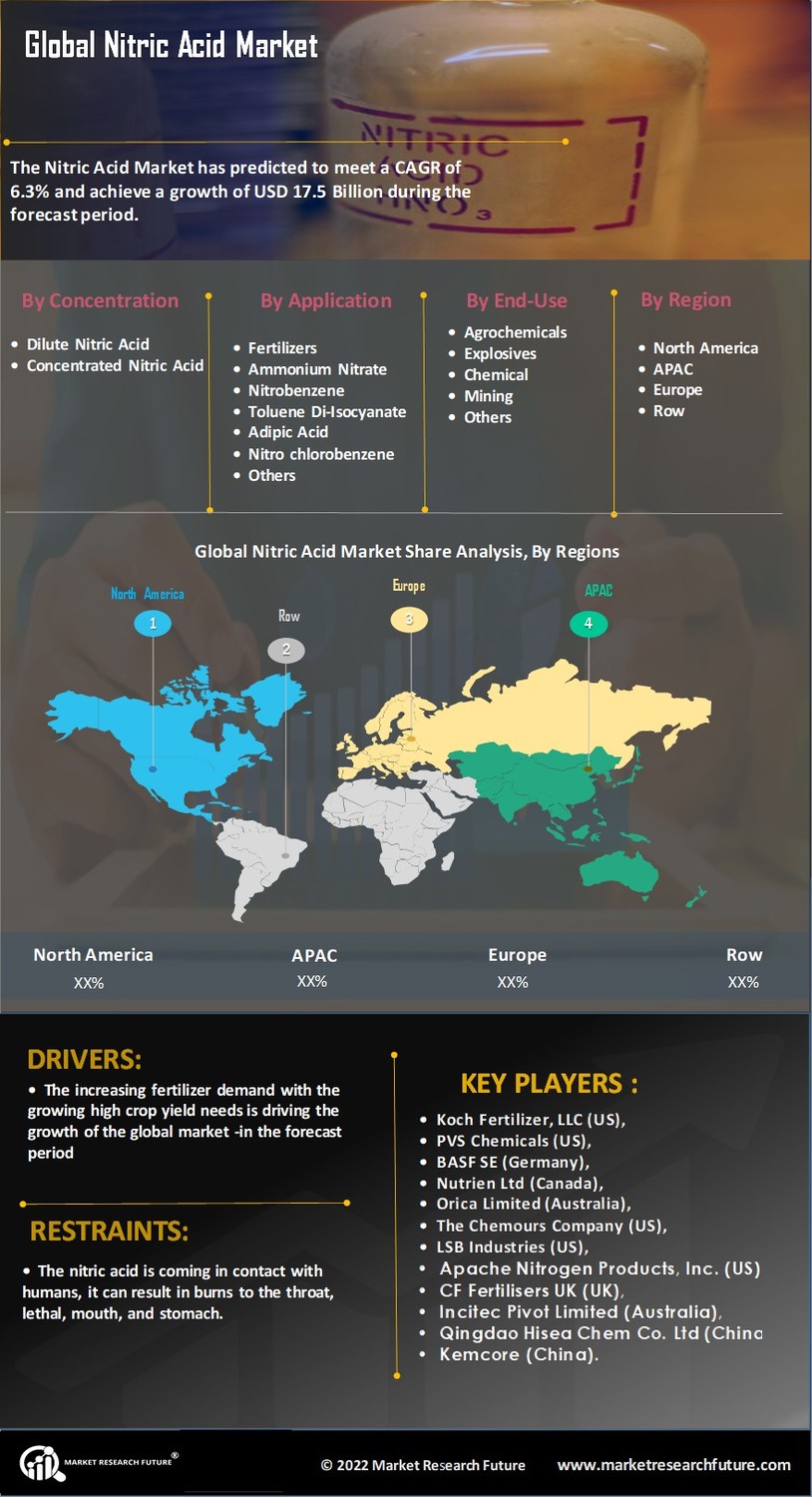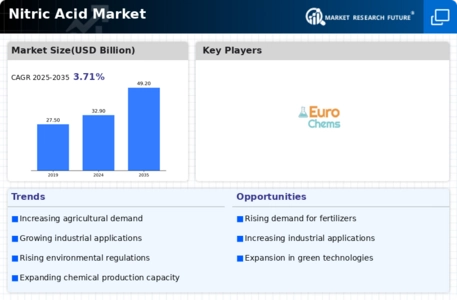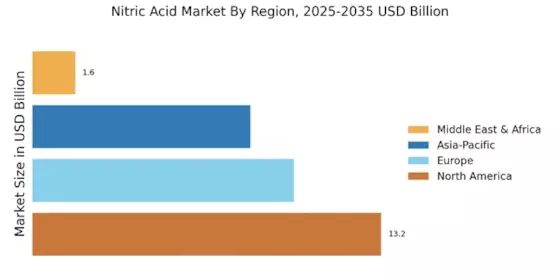Expansion of Emerging Markets
The Nitric Acid Market is poised for growth due to the expansion of emerging markets. Countries experiencing rapid industrialization and urbanization are increasingly investing in infrastructure and agricultural development, leading to heightened demand for nitric acid. For instance, regions with burgeoning agricultural sectors are likely to require more fertilizers, which in turn drives the need for nitric acid. Additionally, the rise of manufacturing industries in these markets creates further opportunities for nitric acid applications. As these economies continue to develop, the Nitric Acid Market may witness a significant uptick in demand, reflecting the broader trends of economic growth and industrial expansion.
Growing Environmental Regulations
The Nitric Acid Market is influenced by the increasing stringency of environmental regulations. Governments worldwide are implementing stricter guidelines to mitigate the environmental impact of industrial processes, including nitric acid production. These regulations often necessitate the adoption of cleaner technologies and practices, which can drive innovation within the industry. While compliance may initially pose challenges, it also presents opportunities for companies to differentiate themselves through sustainable practices. As the industry adapts to these regulations, the demand for environmentally friendly nitric acid production methods is likely to rise, potentially reshaping the competitive landscape of the Nitric Acid Market.
Rising Demand from Fertilizer Industry
The Nitric Acid Market experiences a notable surge in demand primarily driven by the fertilizer sector. Nitric acid is a key ingredient in the production of ammonium nitrate, a widely used nitrogenous fertilizer. As agricultural practices evolve and the need for enhanced crop yields intensifies, the fertilizer industry is projected to expand significantly. Reports indicate that the fertilizer market is expected to grow at a compound annual growth rate of approximately 3.5% over the next few years. This growth directly correlates with the increasing consumption of nitric acid, as manufacturers seek to meet the rising agricultural demands. Consequently, the Nitric Acid Market is likely to benefit from this upward trend, as more nitric acid is required to support the production of fertilizers that ensure food security.
Industrial Applications and Chemical Manufacturing
The Nitric Acid Market is bolstered by its extensive applications in various industrial processes. Nitric acid serves as a vital chemical in the production of explosives, plastics, and dyes, among other products. The chemical manufacturing sector, which has shown resilience and adaptability, continues to drive the demand for nitric acid. For instance, the production of nitrocellulose and nitroglycerin relies heavily on nitric acid, indicating its critical role in the explosives market. As industries expand and innovate, the need for high-purity nitric acid is expected to rise. This trend suggests that the Nitric Acid Market will likely see sustained growth, as manufacturers strive to meet the evolving requirements of diverse industrial applications.
Technological Advancements in Production Processes
Technological advancements play a pivotal role in shaping the Nitric Acid Market. Innovations in production processes, such as the development of more efficient catalytic converters and improved absorption techniques, have the potential to enhance nitric acid production. These advancements not only increase yield but also reduce environmental impact, aligning with the growing emphasis on sustainability. Furthermore, the implementation of advanced monitoring systems allows for better quality control and operational efficiency. As manufacturers adopt these technologies, the Nitric Acid Market is likely to witness a transformation, characterized by increased production capacity and reduced costs, ultimately benefiting end-users across various sectors.


















Leave a Comment